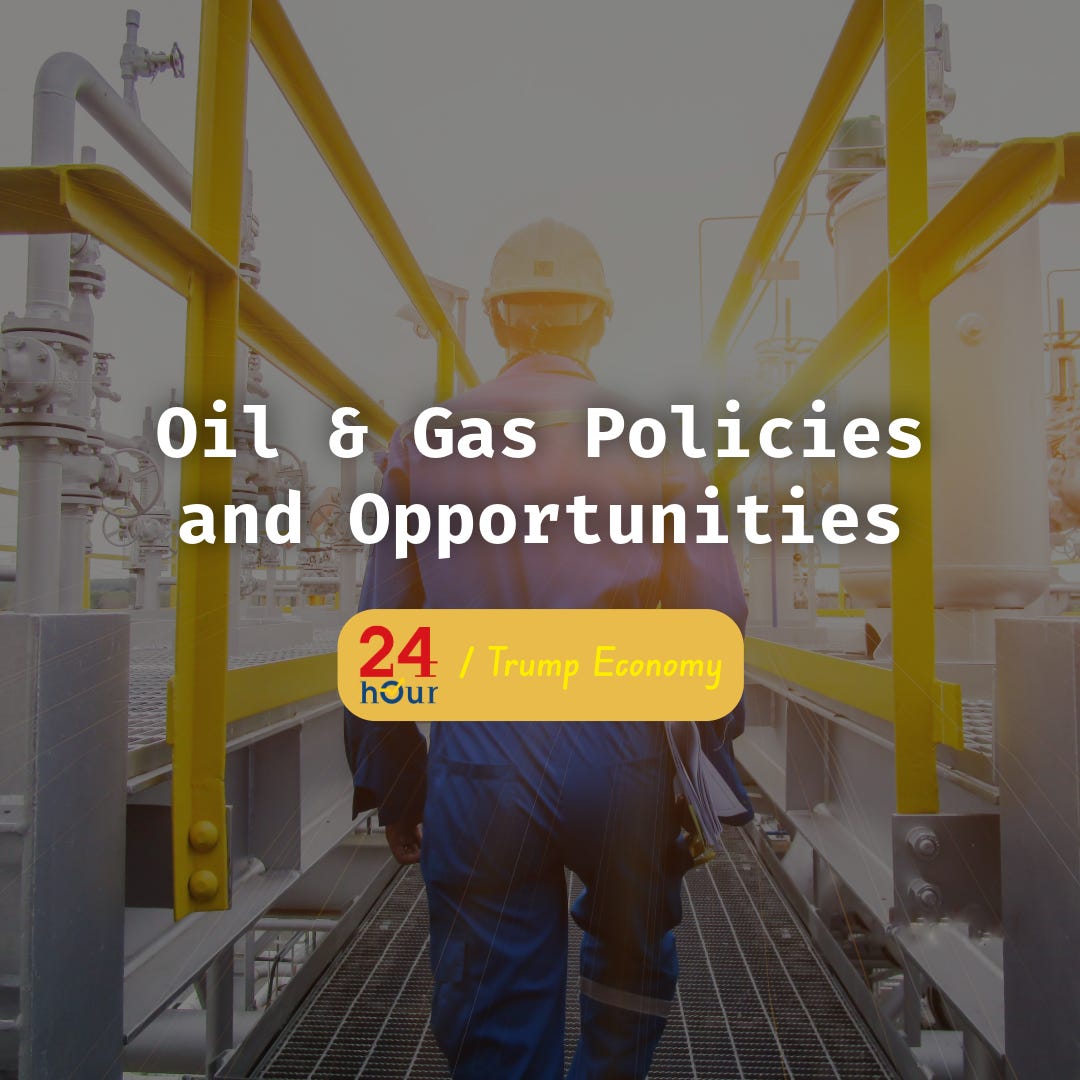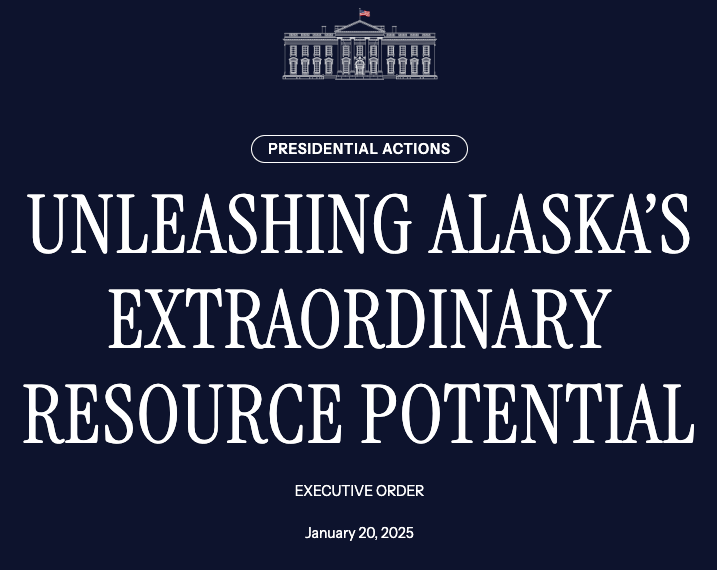A Snapshot of Trump's Second-Term Energy Playbook
Alaska holds substantial oil reserves, primarily concentrated in its North Slope region.
They say lightning never strikes the same place twice, but the sparks are flying again when it comes to Donald Trump and the oil & gas industry. With his second term comes a renewed push for energy dominance, and for savvy investors, the wells of opportunity might run deeper than ever. But to make money—or avoid losing it—you need to understand where the winds of policy are blowing and how to adjust your sails.
The Administration’s Goals
Trump's energy policies are shaping up as a high-octane sequel, complete with his signature mix of deregulation and America-first rhetoric. "We will drill, baby, drill," the president said in his inaugural address. “We will drill, baby, drill. We’ve got the largest reserves of oil and gas on Earth, and we’re going to use them.”
The administration's goals? Boost domestic production, undercut reliance on foreign oil, and cut energy prices by half within a year (or at least try to). Here's what we know so far:
Streamlined Permitting: Drilling permits are gushing out faster than ever. Federal agencies are ordered to cut red tape and approve projects at record speeds.
Expansion of Federal Land Leasing: Trump is opening up vast tracts of federal land for exploration, particularly in resource-rich areas like Alaska and the Gulf of Mexico.
Pipeline Push: While the revival of the Keystone XL pipeline remains a question mark, the administration's pro-pipeline stance is clear. Domestic pipelines might see smoother approvals but don't count on Canada getting a free pass.
Fracking-Friendly Policies: Trump continues championing hydraulic fracturing, encouraging states to exploit shale resources for all they're worth.
These are just part of a spate of actions meant to boost America's already-booming fossil fuel industry.
Green Light to Exploit Federal Reserves
Alaska holds substantial oil reserves, primarily concentrated in its North Slope region. Estimates indicate the state contains approximately 2.5 billion barrels of proven crude oil reserves as of recent figures, while the Gulf of Mexico (err…America) has around twice as much. Alaska’s reserves represent less than 1% of Saudi Arabia's massive reserves. That’s like comparing a drop in a bucket to the bucket itself.
While Alaska's reserves are modest compared to oil giants like Venezuela or Norway, they are significant for the U.S., accounting for around 10% of total domestic proven reserves. Alaska also plays a pivotal role in U.S. energy independence and production, especially through the Trans-Alaska Pipeline System (TAPS), which transports oil across the whole state.
The takeaway? Alaska's oil might not compete with global heavyweights, but it punches above its weight in the U.S. energy scene. It’s the underdog with grit—less of a gusher, more of a reliable stream.
It is the policy of the United States to:
(a) fully avail itself of Alaska’s vast lands and resources for the benefit of the Nation and the American citizens who call Alaska home;
(b) efficiently and effectively maximize the development and production of the natural resources located on both Federal and State lands within Alaska;
(c) expedite the permitting and leasing of energy and natural resource projects in Alaska; and
(d) prioritize the development of Alaska’s liquified natural gas (LNG) potential, including the sale and transportation of Alaskan LNG to other regions of the United States and allied nations within the Pacific region.
Executive Order | Link
Companies to Add to Your Watchlist
In the world of Oil and gas, knowing where to place your bets can mean the difference between striking it rich and drilling a dry hole. Here are some companies poised to thrive in this fast-paced environment:
ExxonMobil XOM 0.00%↑ and Chevron CVX 0.00%↑: Large-scale producers with global reach. Both have global expansion plans and the infrastructure to capitalize on increased U.S. production.
Pioneer Natural Resources PXD 0.00%↑: A standout in the Permian Basin, Pioneer is expected to thrive under fracking-friendly policies.
Halliburton HAL 0.00%↑: With drilling activity likely to increase, oilfield service providers like Halliburton are positioned for growth.
Kinder Morgan KMI 0.00%↑: A major player in the pipeline sector, Kinder Morgan could gain from the administration's support for infrastructure projects.
Other notable companies include Baker Hughes Co., Schlumberger, and ConocoPhillips, who are the main players in the American oil & gas market.
Big Oil spent $445m in the last election cycle to influence Trump and Congress, and now it is time to reap what it has sown. The American companies we listed have a strong presence in the local market and everything they need to benefit from the new government measures.
Dry Holes to Avoid: Risky Bets in the Current Climate
Not all opportunities are created equal. Some companies might look appealing but come with more baggage than a carry-on allowance. Here's who to watch out for:
Canadian Oil Sands Producers: With Trump's focus on domestic resources, Canadian companies like Suncor SU 0.00%↑ and Cenovus CVE 0.00%↑ might face significant challenges to compete in the American market.
High-Debt Explorers: Smaller exploration companies with heavy debt could struggle to stay afloat. Rising interest rates and higher operational costs could make these investments a gamble. Some examples of these companies are California Resources Corporation CRC 0.00%↑, Oasis Petroleum Inc. OAS 0.00%↑, and Laredo Petroleum Inc. LPI 0.00%↑.
U.S.-Focused Wind Energy Companies: The intention to abandon the Paris Agreement and Mr. Trump's clear disdain for wind energy, calling the sight of turbines "disgusting," is a clear signal against renewable energy. Companies like NextEra Energy's NEE 0.00%↑ wind portfolio or smaller wind-focused firms are risky bets in the short-to-medium term.
Other Ways to Play the Field
If you're looking to diversify your energy investments, here are some additional strategies:
Oilfield Services ETFs: Don't want to bet on a single company? ETFs focused on oilfield services can give you broad exposure to the sector. OIH, XES and IEZ are just a few to choose from.
Consumer Stocks: Companies that benefit from lower energy costs—such as airlines, transportation firms, and manufacturing industries—could see a profit boost. Consider adding these sectors to your investment portfolio.
Commodities Trading: For the bold, trading oil futures could offer lucrative (if risky) opportunities during market fluctuations. If you are confident that the price of oil is going to go down due to a higher supply in the medium term, this is an opportunity to make money.
Monitor the Market: While Trump's policies aim to reduce energy costs, external factors such as global oil demand and geopolitical events could create short-term price fluctuations. Stay vigilant and be ready to adjust your strategy.
Refining Your Strategy
The Trump administration's second act in oil and gas is like a Texas rodeo: thrilling, unpredictable, and full of opportunities if you know where to place your bets. Whether you're drilling into the big players or steering clear of the quicksand, now's the time to refine your strategy. Keep your eye on the market, stay flexible, and don't be afraid to get your hands a little dirty—because when it comes to making money in oil and gas, fortune favors the bold.
For Paid Subscribers
Beyond this point is access to exclusive and archived content, tutorials, and behind the scenes.
Upgrade to paid to build the essential skills of money and risk management for a truly self-sufficient future.
Keep reading with a 7-day free trial
Subscribe to 24Hour Journal to keep reading this post and get 7 days of free access to the full post archives.






